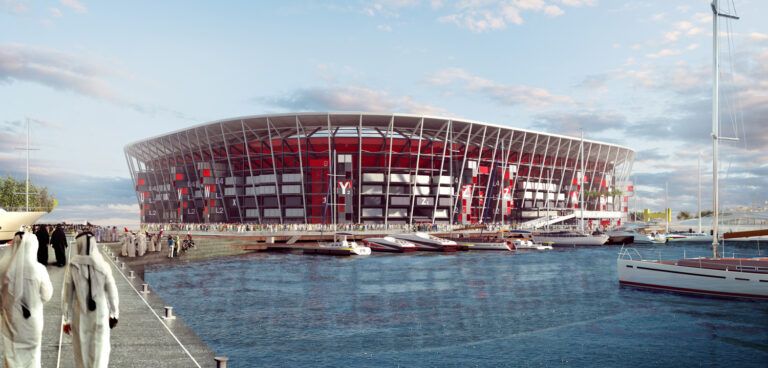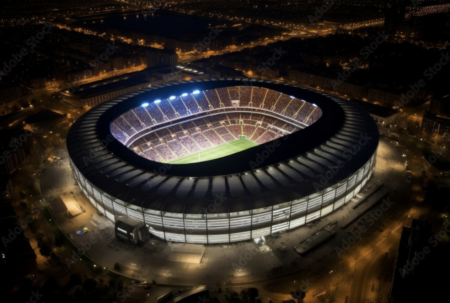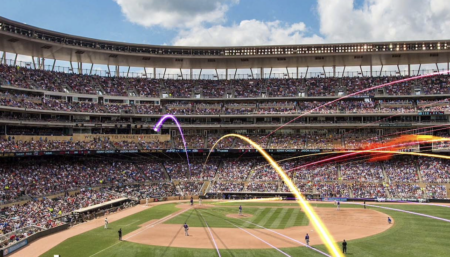As major international sporting events take place around the globe, many areas of the world require new or at least upgraded infrastructure to host them. However, this could and should result in an improvement to community living standards and a modernization of general and sport infrastructure.
By means of an intelligent venue and legacy planning, new sport hubs and areas can be developed into prosperous and multipurpose centers for communities. But this does not always work out and hosts can be left with legacy issues.
Hence sbp’s idea of the first fully demountable container stadium, which we developed together with FIA Fenwick Iribarren Architects and Hilson Moran, was well received when proposed to Aspire and the Supreme Committee in Qatar for the FIFA World Cup 2022 – instead of another permanent arena. The leadership in Qatar understood the potential of such an idea and provided the required funding to develop the project. Today, the design is finalized and construction has commenced.
The idea was to create an entirely modular and yet fully functional stadium, built according to international standards despite using the highest possible repetition of elements and everything being based on containerized uses and containerized transportation.
This was finally achieved for the architectural, structural and MEP layout – and all functions typically required in every state-of-the-art FIFA stadium.
The entire tier steel structure layout is based upon a regular radial and tangential grid. Vertical columns and radial/tangential beams are grouped into only a few families of different sections, allowing for a perfect kit of parts assembly. For that, all structural steel members feature, in principle, identical end connections.
In areas where concourses are required, the modular slab system is laid out, consisting of identical, stackable lightweight orthotropic steel plates with anti-slip coating. All uses, whether for seating, toilets or food and beverage, are arranged in conventional shipping containers, which are internally customized, insulated and equipped with all the necessary comforts and standards. Even MEP services are containerized within those magic boxes – featuring plug-and-play air-handling units, electrical substations and distribution, connected through a bus system, as well as chiller farm and service stations.
Bleachers are made from 8mm folded steel plates to which the conventional stadium chairs can be fixed. There are only a few different bleacher modules within the whole stadium, and all are stackable. The roof structure consists of modular truss segments, covering all seats.
After the last game is played in Qatar, demounting takes place. One option would be to simply ship the entire stadium to its future location and install it there again. Or – and this may be even more interesting for many future locations – the former large-scale stadium could be reconfigured into various smaller-scale event venues, arenas, fully covered halls and grandstands, keeping their full individual functionality and ensuring an afterlife for the former star of a mega-event.
Is this the solution to the typical problems associated with mega-events? No – but it is one powerful measure that, combined with many others, may make a difference. We’ll find out soon.





